
Mushroom Fair, Mancor de la Vall
This mushroom fair is held in the foothills of the Tramuntana mountains in a very cute little village called Mancor de la Vall.
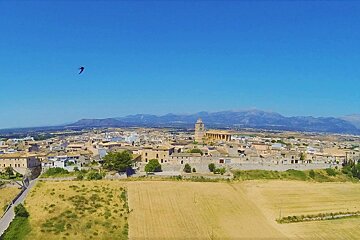
© Ajuntament de Muro

© Ajuntament de Muro

© Ajuntament de Muro
Traditional rural town in the north of Majorca
This small town between Inca and the S'Albufera marshes is a sleepy little place, a typical rural Mallorcan town.
Muro is the administrative centre for it's more famous beach resort of Playa de Muro. This is typical of Mallorcan beach resorts, where the resort consists of hotels and tourist services, but is actually run by an inland town of a similar name.
Muro has a weekly market on Sunday mornings. There is also a Christmas market in December.
There are plenty of religious festivities around Easter, the festivities of San Juan take place in June. They last for two weeks and finish with a bang on the 24 June, normally with a big fireworks display.
The other big festival is the Autumn Fair, which celebrates the pumpkin, in particular, giant pumpkins. It is held at the beginning of November.
During the summer, many more festivities are held at Playa de Muro, the closest beach to Muro.

This mushroom fair is held in the foothills of the Tramuntana mountains in a very cute little village called Mancor de la Vall.

Get into the festive spirit at Palma's annual Christmas Fair.

The German community in Santa Ponsa celebrate their very own 'Weihnachtsmarkt' every year at the Polígono Son Bugadellas.

A spectacular Christmas show, a festive market, ice skating and more at Mallorca's legendary entertainment venue.

Jazz Voyeur Festival, established as the point of reference for high-quality jazz music in the Balearic Islands thanks to its remarkable track record, presents an artistic line-up that once again manages to bring great national and international artists to Mallorca.

The charming Pueblo Español, a reconstructed Spanish village near the centre of Palma, turns into an outdoor market at the beginning of December.
Archaeological remains show that the area was first inhabited in prehistoric times, with Talayotic settlements still visible in the surrounding countryside. Later, under Roman rule, Muro formed part of the fertile plain used for agriculture, which would remain its mainstay for centuries.
During the Moorish period (10th to 13th centuries), the land was carefully managed with irrigation systems, allowing crops such as cereals, figs and almonds to thrive. After the Christian conquest of Mallorca in 1229, the town began to take on its current form, with a parish church and fortified houses shaping the village centre.
By the late Middle Ages, Muro had established itself as an important agricultural hub, supplying much of the island’s grain. Its prosperity is reflected in the grand stone houses and civic buildings still found in the town today. In the 19th century, the introduction of the railway helped to connect Muro more closely with Palma, further boosting trade.
Today, Muro retains its strong agricultural identity, particularly celebrated through events like the annual pumpkin fair, while also welcoming visitors who come to enjoy its history, culture and proximity to Playa de Muro.
Muro has one overriding attraction - the Museu Etnologic de Mallorca. This museum, housed in a former mansion, gives fascinating glimpses into Mallorca's past. The kitchen contains pottery similar to what you see in the markets today, the recreated pharmacy has a pair of scales in the shape of a crucifix.
Upstairs there is a fine collection of siurells (clay whistles) featuring men on horseback, carrying water and playing guitars. A courtyard with a well, a waterwheel and orange trees leads to more exhibits blacksmith's and cobbler's workshops, a collection of carriages, and tools once used by siversmiths, sculptors and spoonmakers.
The Catalan-Gothic church of Sant Joan Baptista looks almost Arabic, guarded by palm trees and a tall, square bell-tower linked to the main church by a tiny bridge. Rebuilt in the 16th century, it has a colourful rose window over the west door.
Another church, the convent of Santa Anna, used to stage fights between bulls and bulldogs, and bullfights can still be seen at the Placa de Toros, built out of white stone in its own quarny in 1910.
Close to Muro lies Playa de Muro, a long sweep of soft white sand and shallow turquoise water, perfect for families. Parts are lively with facilities and water sports, while others remain quiet and natural, backed by dunes and wetlands. Nearby, smaller coves like Es Comú de Muro offer a wilder, more secluded beach experience.

Situated 10km away from Alcudia on Mallorca’s northern coast, Playa de Ca’n Picafort is a busy yet beautiful expanse of soft white sand with clear blue waters. This small fishing village turned purpose-built-resort, mostly caters to tourists and all-inclusive holidaymakers, who arrive by the bus load every summer.
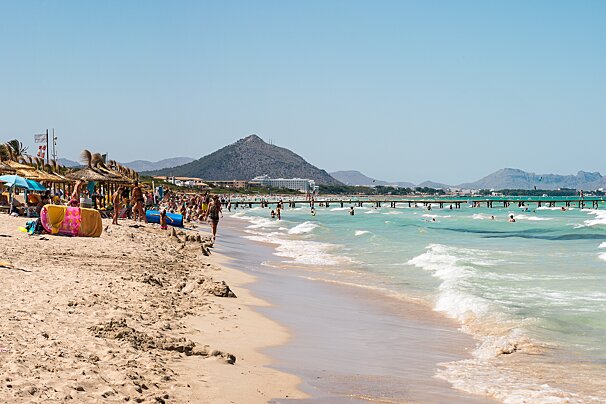
Playa de Muro is a beautiful 6 kilometre long, Blue Flag award-winning, white sandy beach in the north of Mallorca. It's generally quieter than neighbouring Alcudia beach because of its out of town location.

The beach at Son Baulo is a good antidote to the heaving masses and consumerism of neighbouring Ca’n Picafort. Still busy and still boasting everything you need, Son Baulo has managed to retain some character and a bit more class than its larger and better-known neighbour.

This beautiful and popular ‘Blue Flag’ beach boasting fine white sand, stretches more than 3 kilometres east from Port d'Alcúdia. This breath-taking beach is one of the reasons why Port d'Alcúdia remains so popular with holiday makers year after year.

There is a 5km patch of isolated coast between Playa Son Baulo and Son Serra de Marina in North Mallorca that is known as Playa de Son Real. It is a rough stretch of coastline that is mostly made up of pebbly inlets and rocky outcrops, but interspersed with them is a scattering of the holy grail of beaches – tiny perfect white sandy coves with easy access to the turquoise sea.

A short trip out of Alcudia and away from the crowds, is a rugged stretch of coastline featuring beautiful turquoise waters and it’s own island lighthouse.
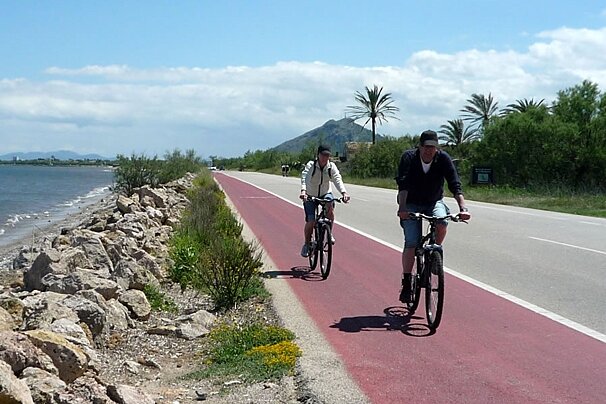
An easy ride if you are used to road biking and at 44km this route could be a good challenge for a beginner!
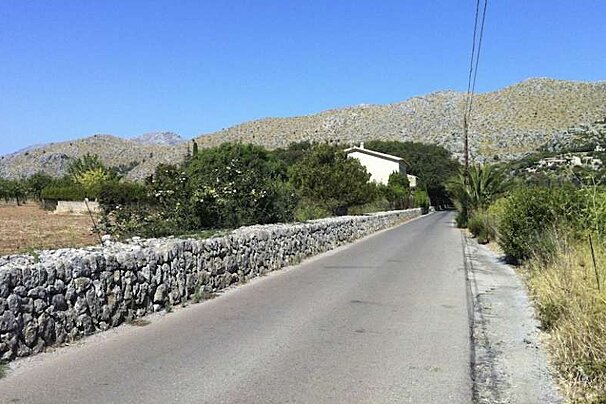
100,000 cyclists cannot be wrong. Mallorca is one of the most popular and idyllic islands for cycling with it's plentiful flat farm roads and challenging hill climbs.
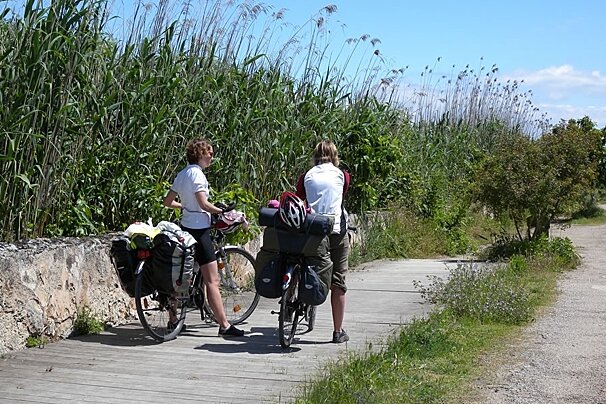
Combining nature, bird spotting and a bit of exercise with a cycle round the nature reserve by the holiday resort of Puerto Alcudia.
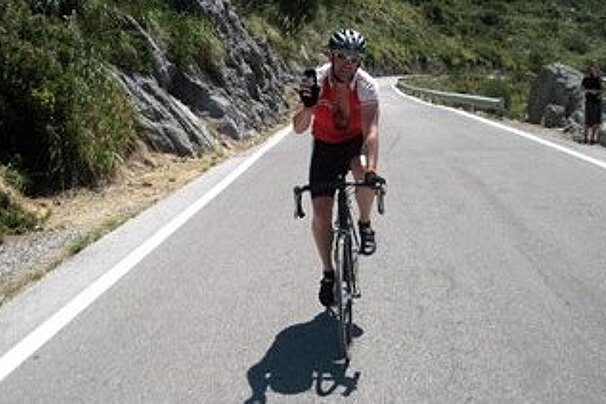
An easy route more suited to someone with a bit of road cycling experience due to the nature of the hills and busy roads.
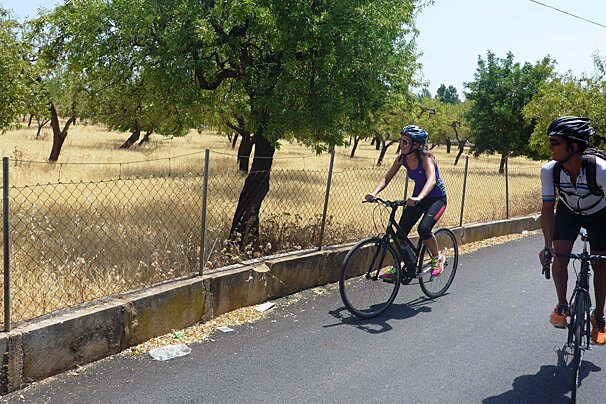
A cycling tour with Mills and Honey isn't just about cycling, it's about immersing yourself in the landscape, culture and flavours of the island.

Beginner (or intermediate if you want to ride it at pace!) cycle route that uses the purpose built paths around the Alcudia area.

Campanet is located in the north-west of Mallorca, about 8 km north of Inca. In Campanet, the parish church is worth a visit. It was built in 1717, and its outstanding feature is the sculpture on the altar. The church holds the relics of the Martyr San Victoriano, the complete body of the saint dressed as a warrior.
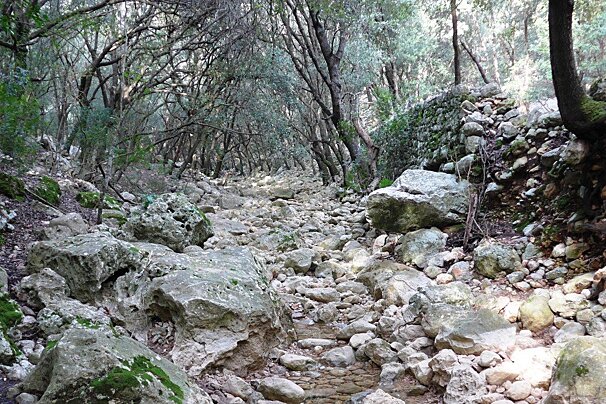
Ses Fonts Ufanes is a protected area of natural springs on the outskirts of Campanet. It's the perfect place for a relaxing walk with all the family. Although there are plenty of coastal walks on the island, it's rare to be able to stroll along a riverbank and enjoy the sound of gushing water.
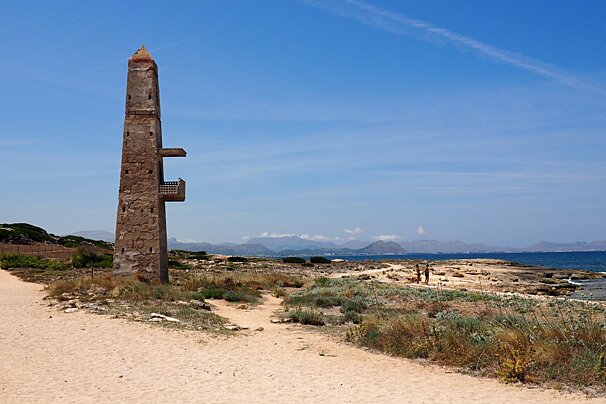
A beautiful 6km coastal hike from Can Picafort to Son Serra de Marina taking in stunning sea views, archaeological sites, deserted beaches, ecological areas and the occasional nudist.

A beautiful 6km coastal hike in the north of Mallorca taking in stunning sea views, archaeological sites, deserted beaches, ecological areas and the occasional nudist.

Inca can be reached either by train from Palma or by car. If you go to Inca on a Thursday, you'll be able to enjoy one of Mallorca's biggest and best markets.
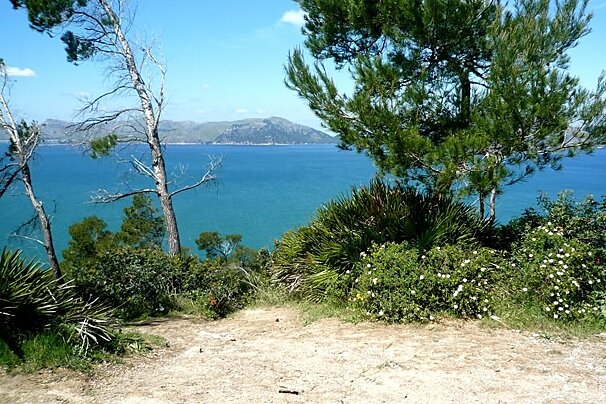
Alcudia is located at the top of Mallorca, on the north coast. From Alcudia, take the road going to Mal Pas. Then you can either follow it along the coastline until it reaches the beginning of the road up to the "Hermita La Victoria". Or you can follow an inland trail (signposted 'Fundacion') towards the Yannick & Ben Jokober Foundation and then take the marked trail to the Hermita.



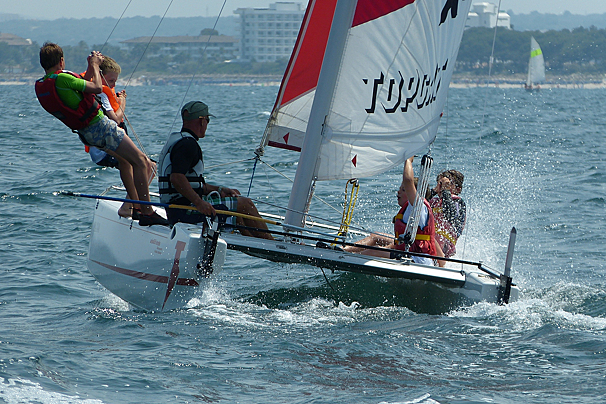
Catamarans are the Formula 1 of sailing. Built for speed you'll get a real thrill from racing the waves.

Sailing courses on dinghies for all abilities!
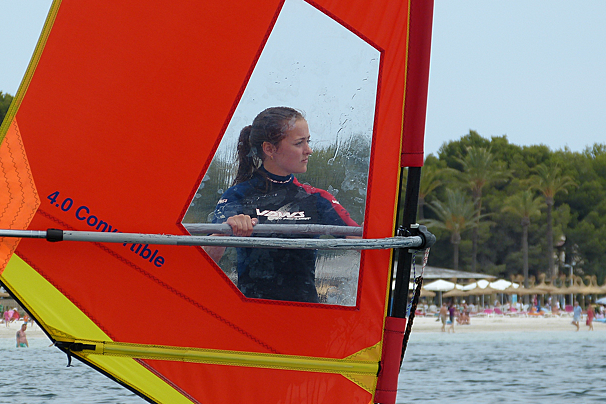
At the end of every course successful trainees are issued an internationally acknowledged windsurfing certificate (VDWS). This certificate entitles holders to hire windsurfing crafts at all water stations, and certifies their skills.
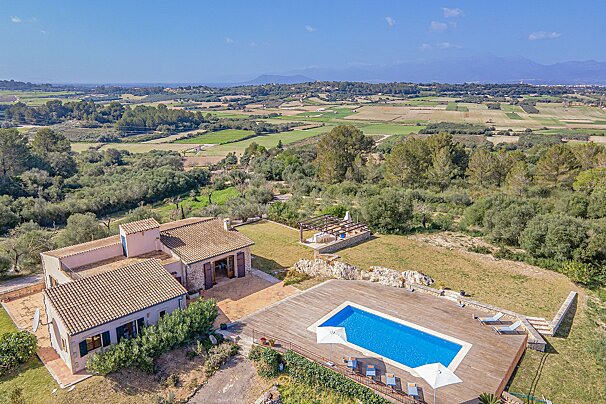
Enjoy an unforgettable vacation in this villa! Imagine this: Waking up to the sound of birds singing and the aroma of freshly brewed coffee wafting through the air. Go out to the terrace to enjoy breakfast with views of the impressive mountains of Mallorca.
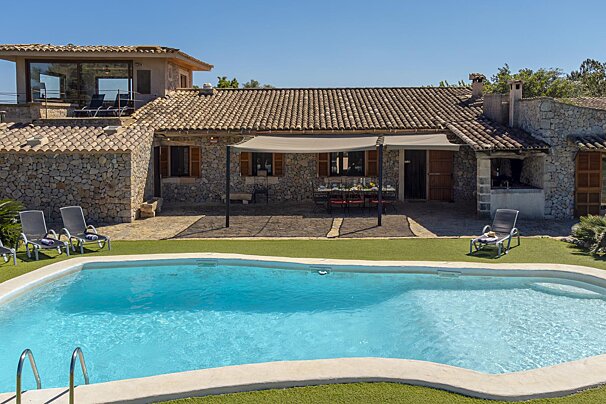
This beautiful, stone clad country home set amongst the undulating countryside surrounding the small village of Buger, offers spacious grounds as well as a generous, convivial interior with wooden flooring, high ceilings and contemporary furnishings that create a light, bright & airy ambiance throughout.
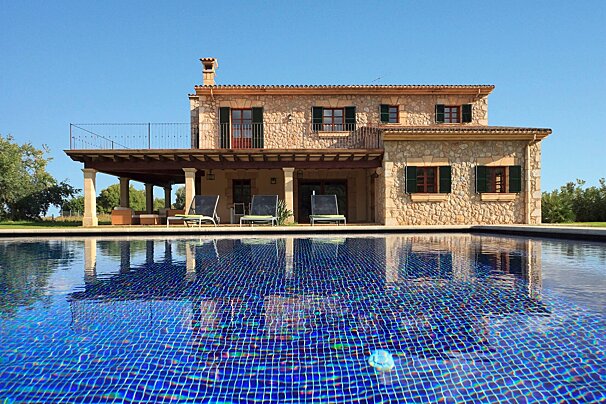
Villa Son Ferragut de Baix is a stylish, spacious villa with four air-conditioned bedrooms, surrounded by olive trees and almond groves with unobstructed views towards the Tramuntana mountains. A truly beautiful location in the most unspoilt area of Mallorca! With beautifully furnished interiors, a great location in the outskirts of the town of Sa Pobla and a large swimming pool, Villa Son Ferragut de Baix is set to impress.
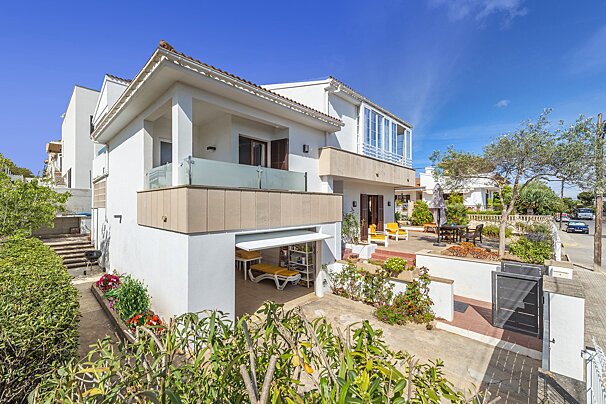
Fantastic villa with swimming pool located in Can Picafort, just 450 meters from the beach, where 7 guests can stay.
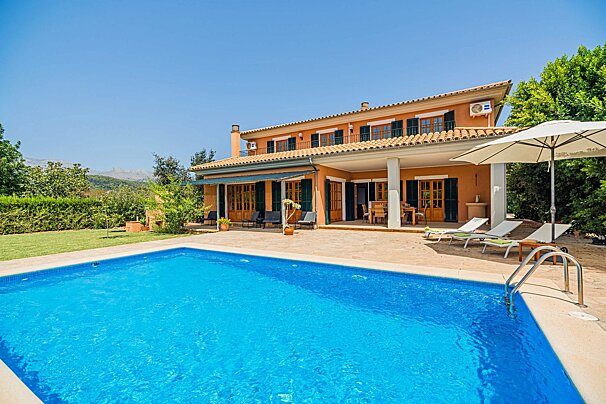
Villa Lluna Nova is a spacious and welcoming Mallorcan home with private pool, providing total privacy, unobstructed views, 4 bedrooms and 4 bathrooms. Enjoying an ideal location in the area of Sa Pobla, just a short drive away from the white sandy beaches of Playa de Muro, Alcudia and Puerto Pollensa, this villa is a oasis of peace in one of the most sought after areas of the island.
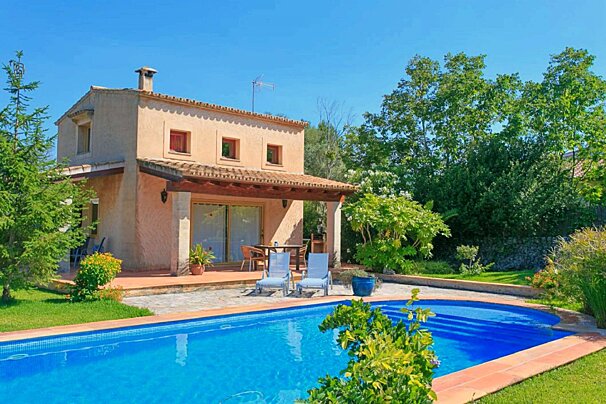
Crestaix d'Alt is a lovely house situated in Crestaix, a peaceful residential area between Sa Pobla and the old Roman town of Pollensa.
Muro offers a variety of short-term rental options, from rustic fincas and spacious villas with private pools to cosy apartments and townhouses. Many properties are set amid gardens, olive groves, or the peaceful countryside, providing privacy and charm. With the freedom to cook, relax and come and go as you please, it's a great option for anyone who enjoys a slower pace surrounded by natural beauty.
Muro has a selection of hotels, many are set amid gardens or near the outskirts of town, offering a tranquil rural atmosphere while remaining within easy reach of nearby beaches. Expect traditional Mallorcan architecture, comfortable rooms, and amenities such as swimming pools, on-site dining, and family-friendly facilities. Some focus on wellness, providing spa services and relaxation areas, while others cater to couples or groups seeking a quiet retreat. These hotels are ideal for visitors looking for convenience, comfort, and a taste of rural Mallorca.
Car hire is a viable option in Mallorca and Muro is a 45 minute drive from Palma airport. Or take the worry out of getting from the airport and book a transfer.
There are no direct buses to Muro from the airport.
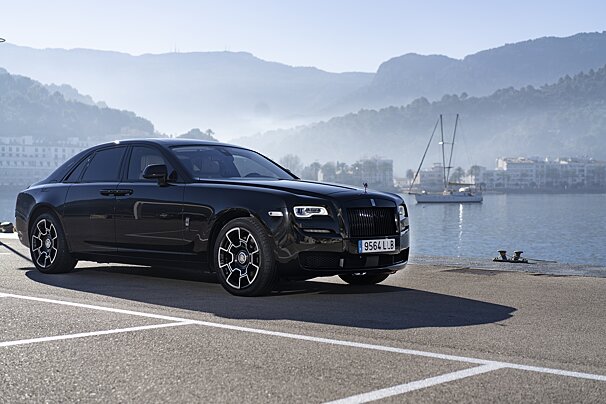
Experience luxury and convenience with this company. Arrive at your yacht charter, sunset tour or boat trip in unparalleled style in a Rolls Royce Ghost.

The established company have been offering a reliable, reasonably priced, private transfer service in Mallorca since 1993.
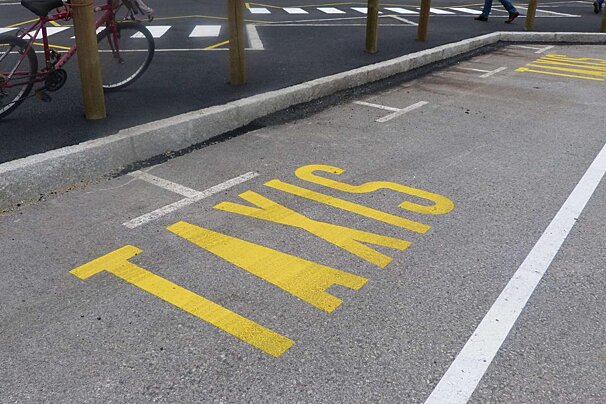
This transfer company offers cheap and reliable Airport Transfers to all destinations in Mallorca with official vehicles and professional drivers.

With offices in Alcudia and the airport, Majorca Airport Transfers has a large fleet of taxis, minibuses and coaches to suit all group sizes.
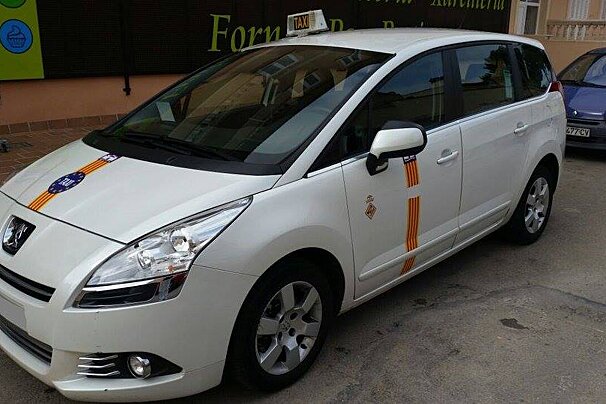
This taxi company offers 24-hour service from the airport to your accommodation all around Mallorca.
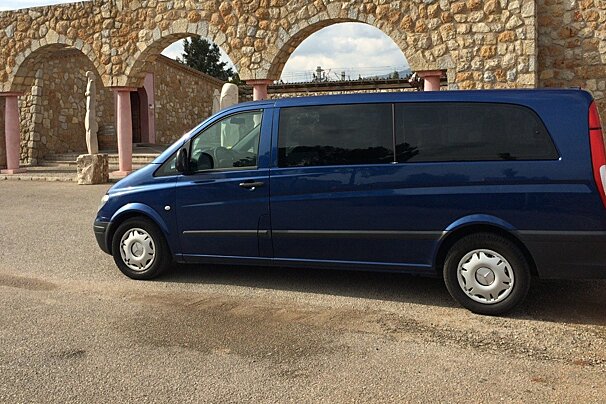
Great quality service at rates that are irresistible. This company exclusively transfer you around Mallorca without having to pay an excessive price.
Find out all about what is happening in Mallorca and how to make the most of your time here. The latest news, reviews of fun activities, fabulous beaches, current events and the trendiest restaurants, as well as interviews with leading locals, insider's guides and our top choices for things to do, see, and experience on the island.
See allLatest News & ReviewsThe island hosts all sorts of events, including agricultural fairs in the spring and autumn, live music and DJs in the summer, religious fiestas and international sporting events. Some of the most popular are the Mallorca 312 cycling race in April, the Copa del Rey sailing regatta in July and the Moors vs Christians mock battle in September.
See allUpcoming Events